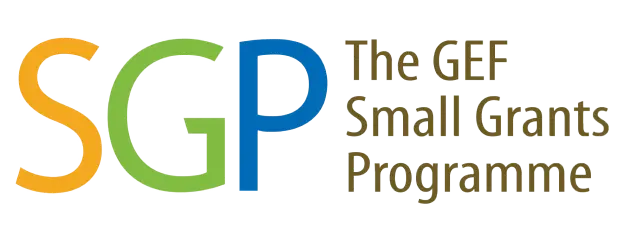PROGRAM IMPLEMENTATION DESCRIPTION
The Treasure Hunt
Searching, Collecting and Reinventing the Local Knowledges
- Activities to search for and document lost local knowledge were carried out in four GEF-SGP phase 6 work areas which include Nusa Penida Island, Semau Island, Gorontalo and Wakatobi.
- Carried out since September 2018 and divided into two stages, namely: field research in 4 GEF-SGP phase 6 work areas and inter-village meetings.
- In the field there has been a change in the schedule. Field research only started at the beginning of 2019 due to adapting to traditional agendas, weather, uncertainty in the activities of sources.
- The inter-village meeting experienced a delay in the schedule which was originally to be held in Wakatobi, but was finally held in Nusa Penida in early December 2019. This happened due to adjustments to the traditional calendar, conditions of the speakers, budgeting, as well as easy access to the location where the activities were carried out.
PROGRAM IMPLEMENTATION DESCRIPTION
FIELD RESEARCH
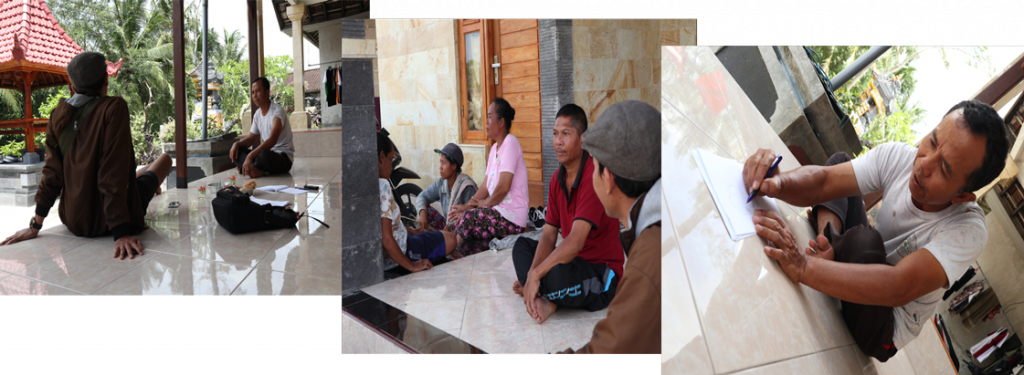
Searching, documenting activities
Photo 1 and photo 2: Dialogue with traditional leaders in Tanglad village and Batukandik-Nusa Penida village.
Photo 3: I Made Rama drawing the Cubang water system.
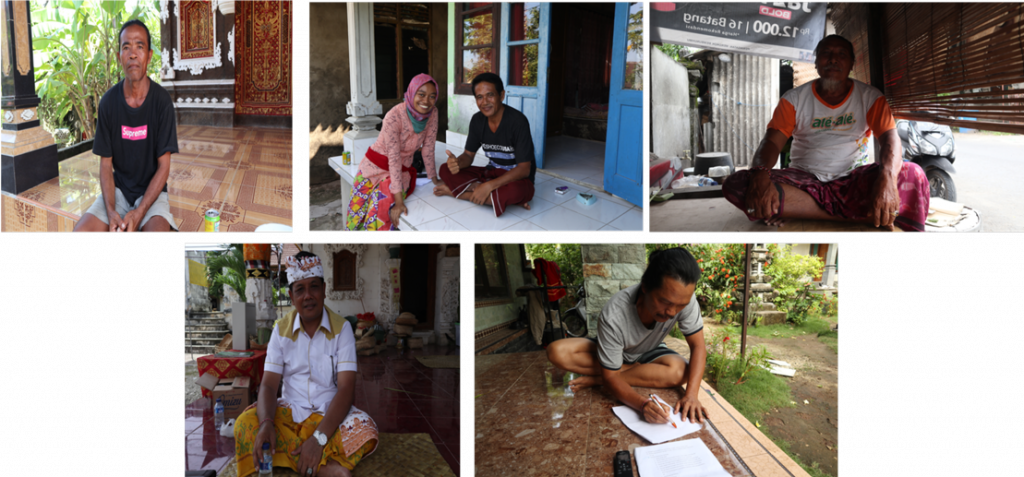
Photo 4: Dialogue with seaweed farmers in Suana Village, Nusa Penida, who are still surviving.
Photos 5, 6 and 7: Dialogue with community leaders in the villages of Suana, Ped, Pura Batu Medau and Batumadeg, Nusa Penida.
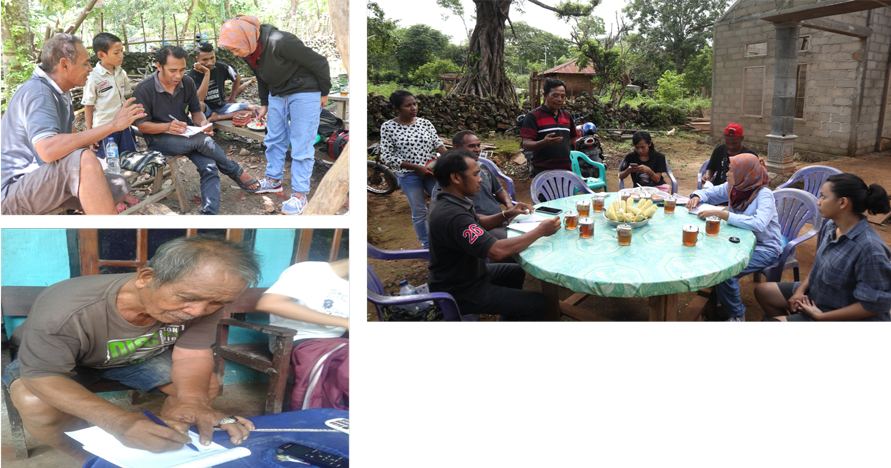
Photos 8, 9 and 10: Dialogue with community leaders (Mr. Kalvin, Mr. Pong, Mr. Tom, young people in Uiasa Village, Semau regarding water sources and their management, local food sources, the existence of forests as well as cultivation rituals from the past to the present.
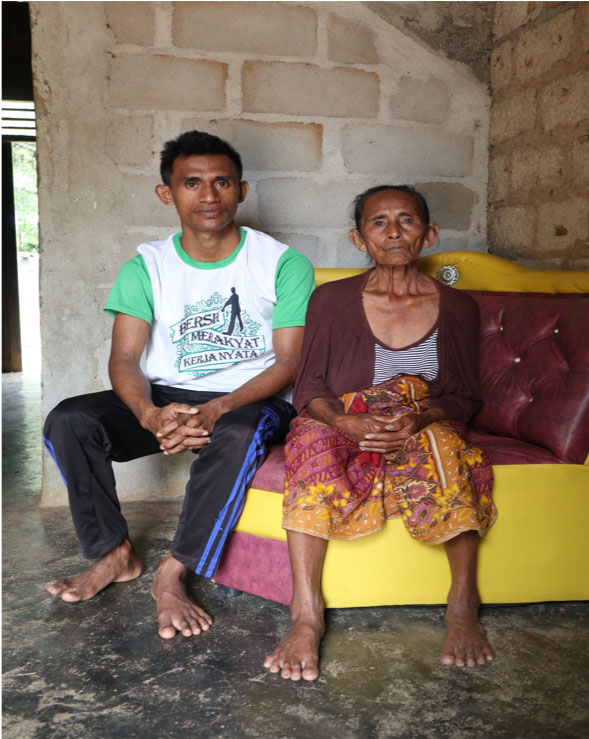
Photo 11: One of the remaining imblingin (midwifes) on Semau Island. Imblingin masters the use of local plants for healing and caring for mothers giving birth and children being born.

Photos 12, 13: Dialogue with community leaders and one of the brothers (landlord) on Semau Island.
Photo 14: Dialogue with one of the elders in Uitiuhtuan Village. In Semau there is a belief that if an old person tells stories about experiences or things related to history and stories about ancestors, that person will soon die. So, there are some older people who are reluctant to share their knowledge.
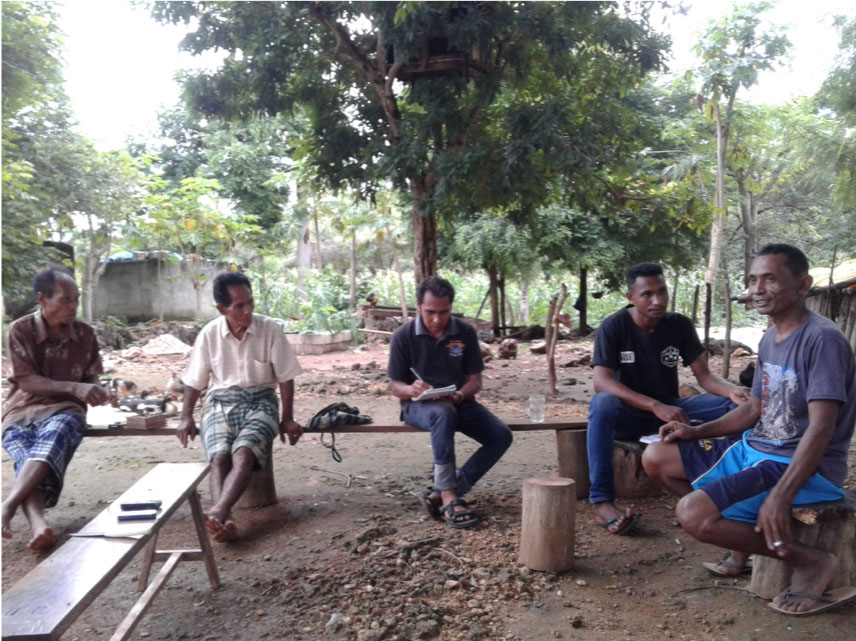
Photo 15: Meeting and dialogue with community leaders and imtehen (broken bone healers) in Batuinan village, Semau. Here knowledge is found related to reading natural signs, the seasonal calendar, the history of Semau and agricultural transitions, fish harvest times, lingae, and other traditions of the Putis Lulut clan.
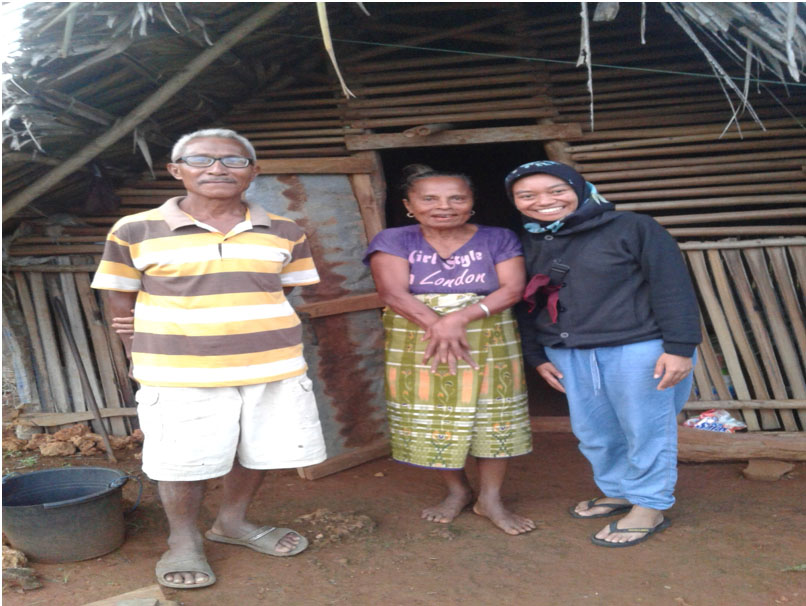
Photo 16: Meeting and dialogue with community leaders in Uiboa village who now chooses to live in the middle of the forest with his wife who weaves leaves into various kinds of products every day.
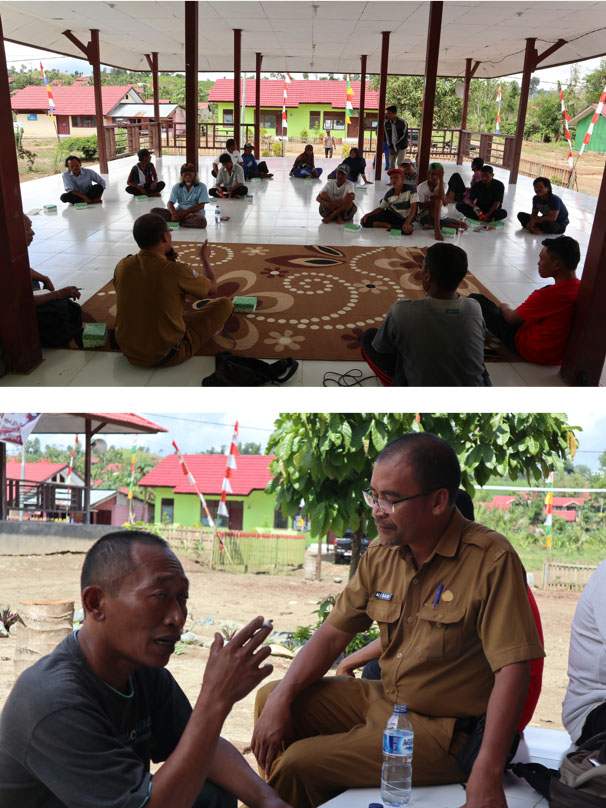
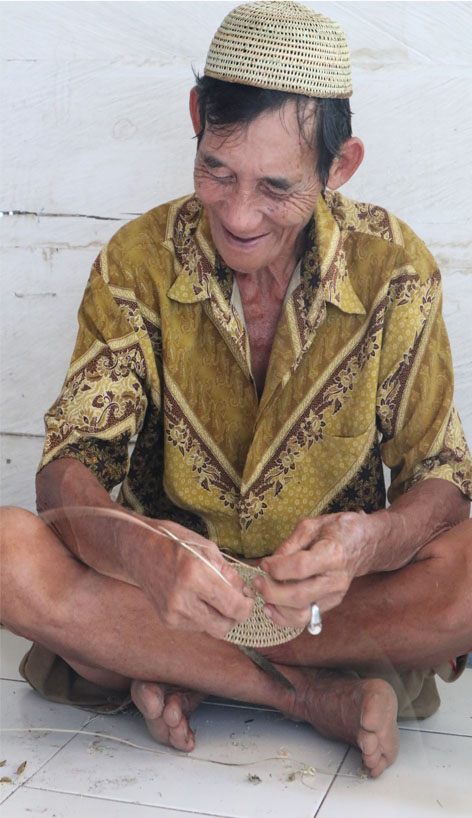
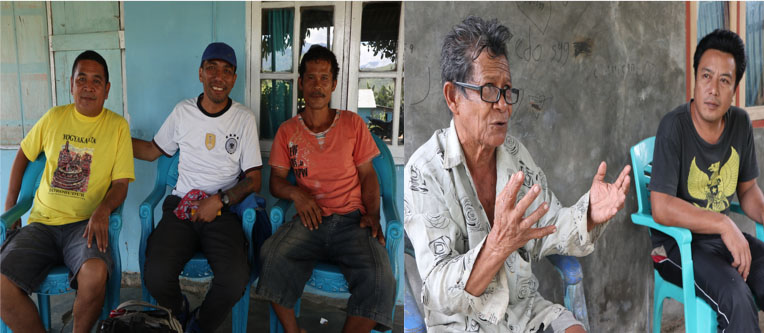
Photo 17: Dialogue with residents and stakeholders in Gorontalo.
Photo 18: Dialogue with Sugeng Sutrisnon, an NGO activist who focuses on environmental issues.
Photo 19: One of the woven craftsmen.
Photo 20: dialogue with Bukhari Boroma (one of the village heads in Gorontalo).
Photo 21: Dialogue with one of the Panggoba. Panggoba is a public figure who masters the science of astrology and the ins and outs of agriculture. In the past, Panggoba's position was as regional agriculture minister.
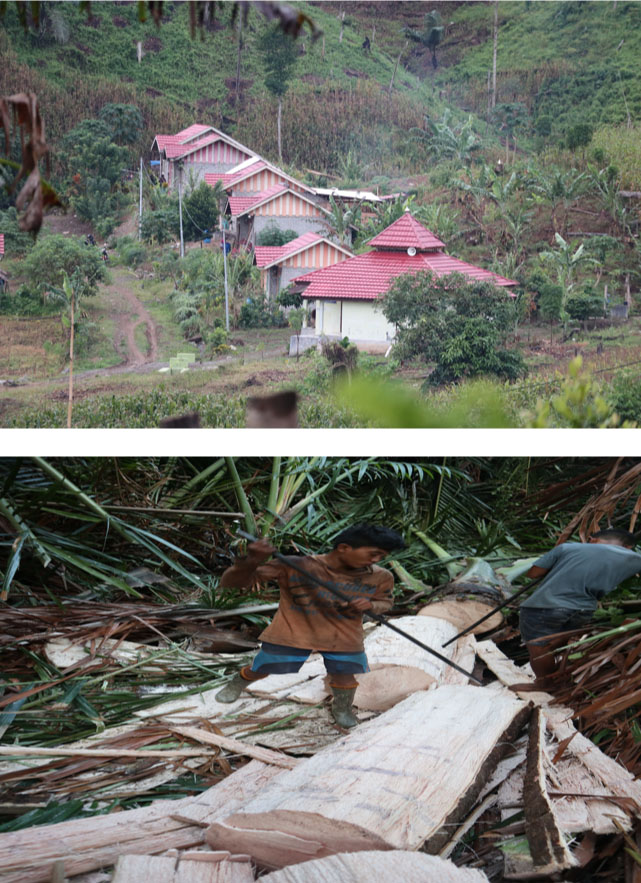
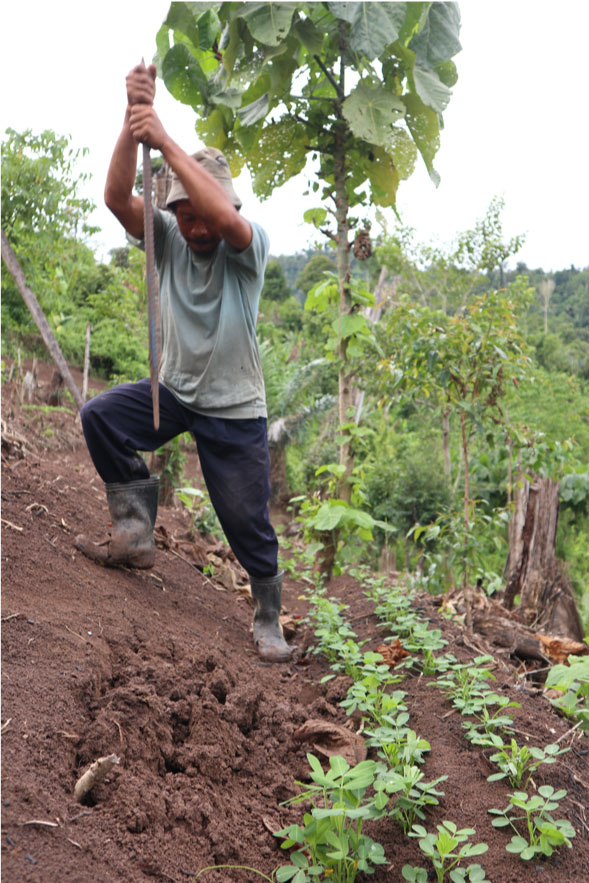
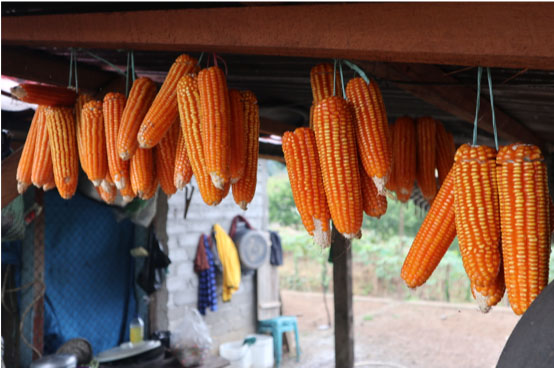
Photo 22: Transmigrant settlement area in Gorontalo.
Photo 23: One of the activities is cutting down sago trees to make sago.
Photo 24: Bonari, one of the migrant farmers from Central Java who has succeeded in developing a terrace farming model in Nantu-Gorontalo.
Photo 25: Corn is one of the people's staple foods besides sago.
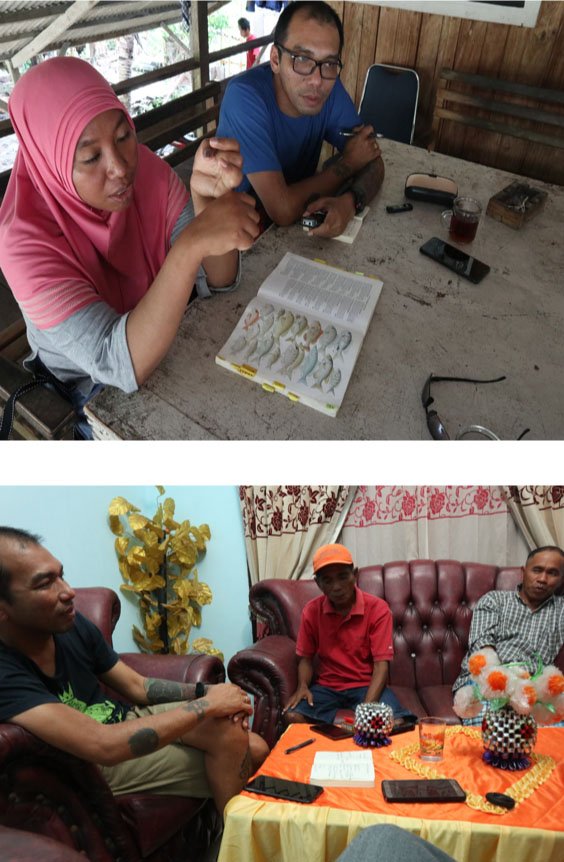
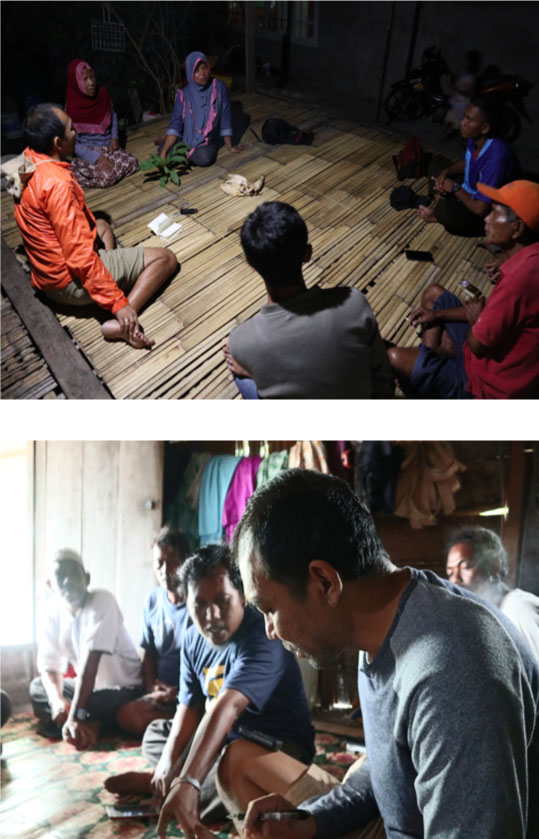
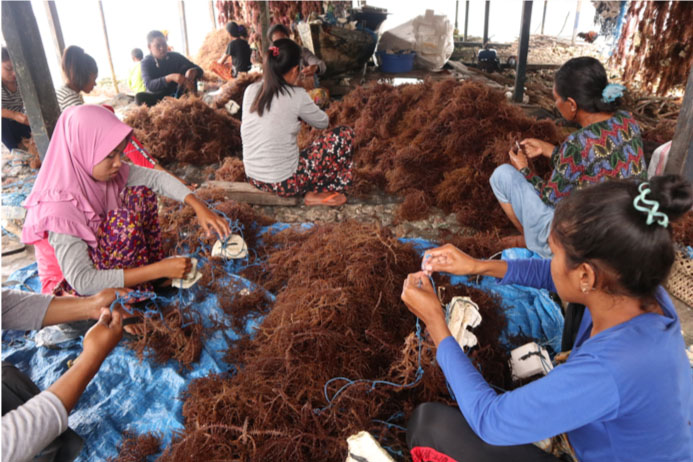
Photo 26: Initial dialogue with the Forkani Foundation, Wakatobi.
Photos 27, 28, 29: Dialogue with community leaders and traditional leaders in Kaledupa.
Photo 30: Activities of women tying and harvesting seaweed.
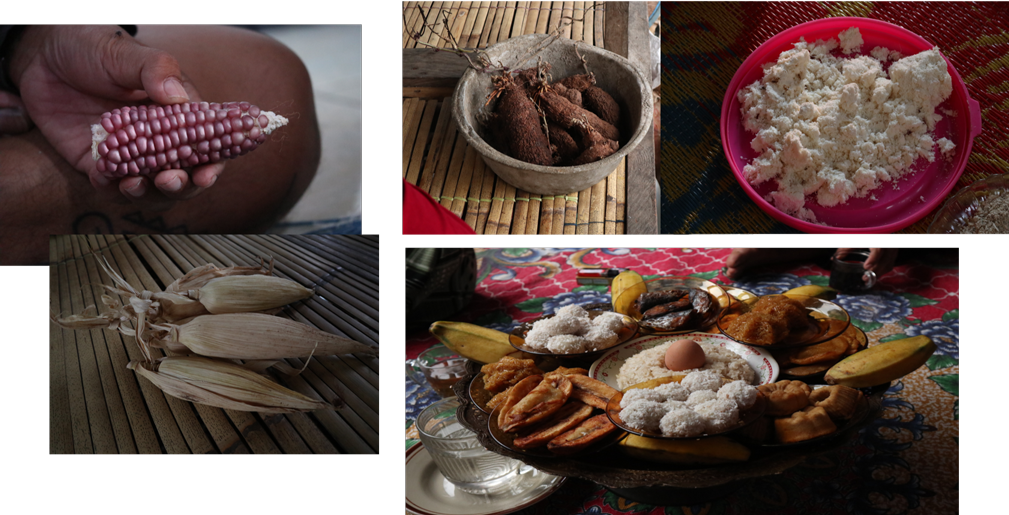
Photos 31, 32, 33, 34, 35: Several types of local food and local food preparations in Wakatobi. A familiar local food preparation in Wakatobi is Soami. Soami is made from cassava. In Wakatobi there are various types of cassava. In Wakatobi, the mode of storing food in fields is also known. This means that the food storage of the Wakatobi people is what they grow.
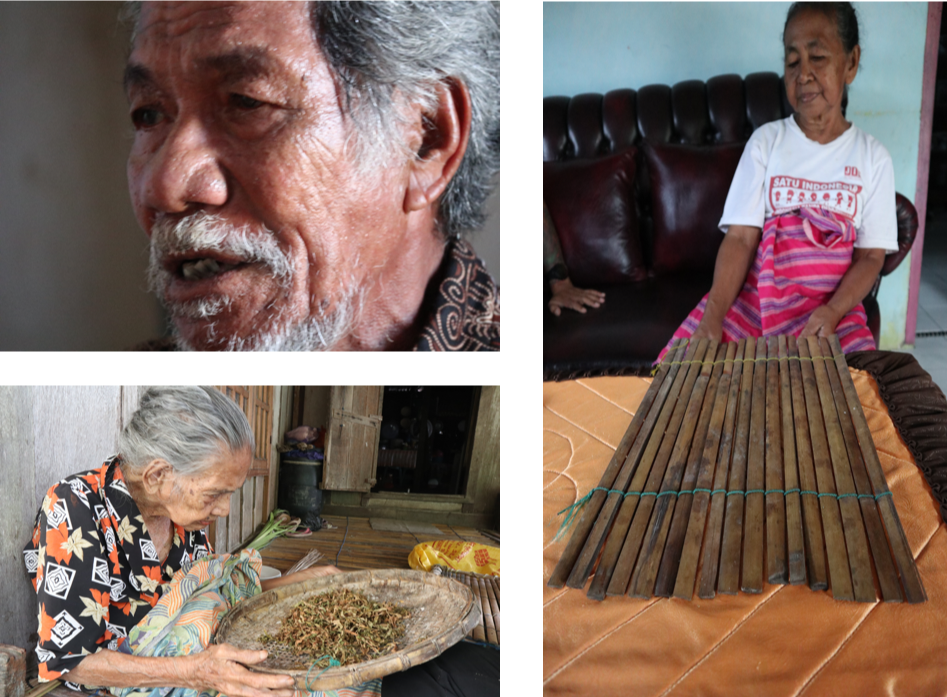
Photos 36, 37, 38: Dialogue with elders who master knowledge about reading natural signs, using various types of plants for health, crafts.
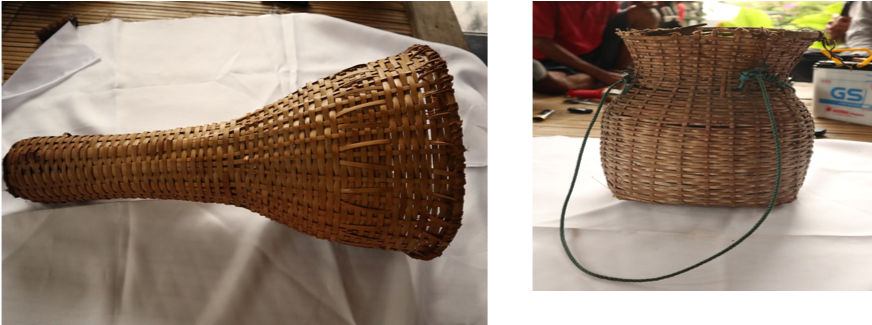
Photos 39, 40: Traditional tools used to catch fish.
Inter-village meeting
Held at Pura Puser Saab, Batumadeg Village, Nusa Penida on 30 November-2 December 2019. Packaged in a learning dialogue with the community with the theme "Paruman Nusa". In its implementation, Kapungu collaborated with the Wisanggeni Community, the Puser Saab Temple Committee, the Sekaa Gong of Batumadeg Village, and the residents of Batumadeg village. The participants present were representatives from four regions, namely: one person from Semau, one person from Wakatobi, two people from Gorontalo, one person from Nusa Penida, one person from Nusa Lembongan, residents of Batumadeg village, invited GEF-SGP partners, invited groups community, NGOs, academics, representatives of the Nusa Penida sub-district head and representatives from each village in the Nusa Penida sub-district. The total number of participants at the intergenerational meeting was around 100 people. The activity began with a Gong Presentation from the Sekaha Gong of Batumadeg Village, followed by speeches and presentation of research findings in four regions, then continued with the main event, namely sharing stories with each regional representative and ended with a short summary as well as a recommendation for the results of joint learning.
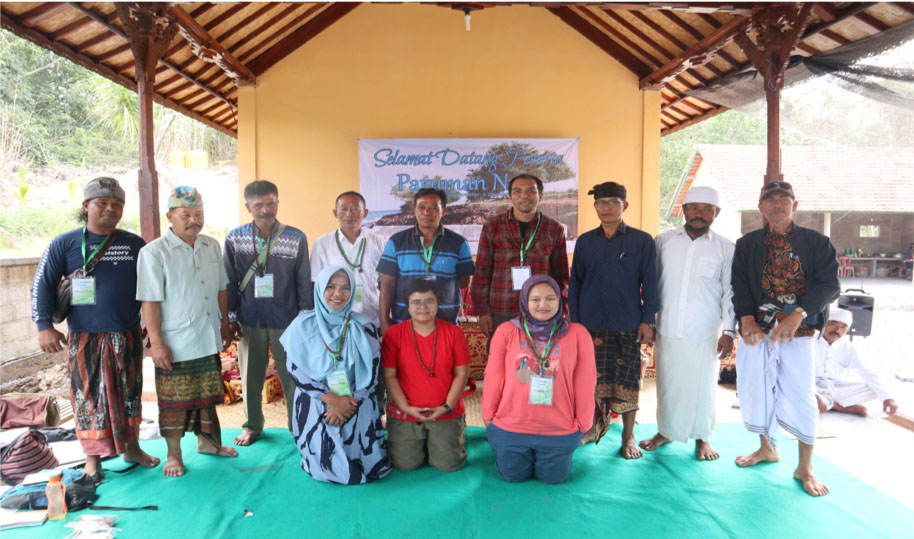

Photos 41, 42: Representatives from four, Nusa Penida, Semau, Wakatobi and Gorontalo.
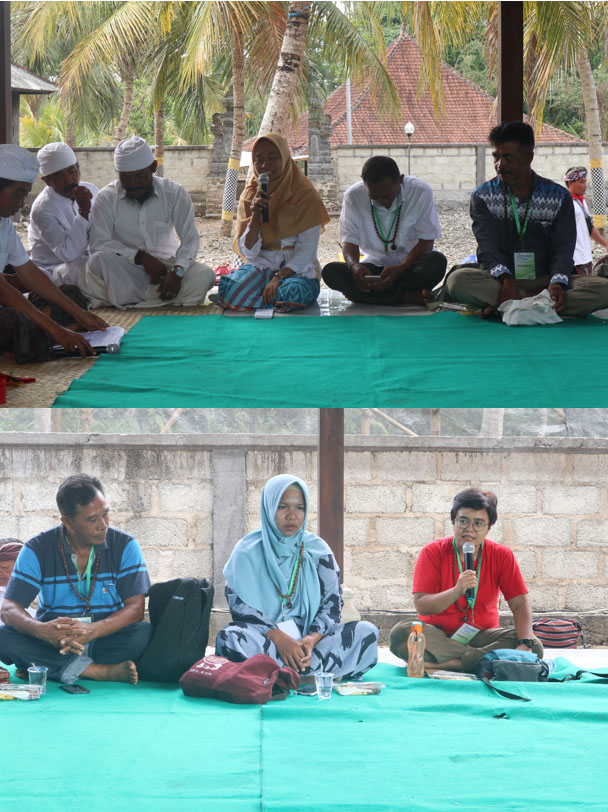
Photos 43, 44: Presentation of field research results by Kapasungu and remarks from GEF-SGP Indonesia.
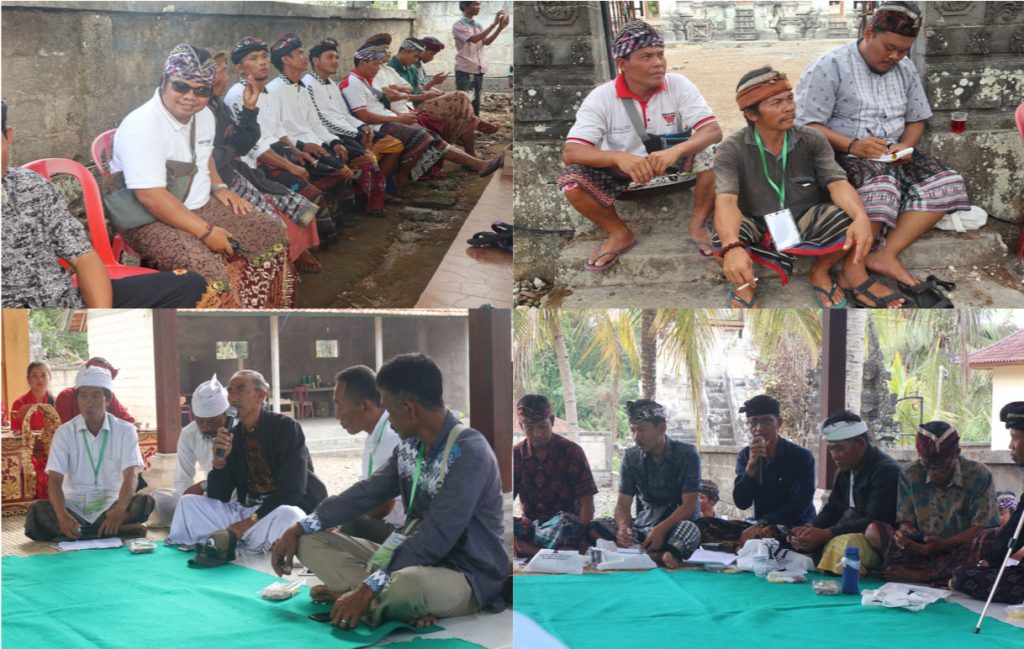
Photos 45, 46, 47, 48: Residents, the Klumpu traditional village head (I Wayan Darya Susila) and the Batumadeg village head (Imade Mustika) are actively involved in learning dialogue activities with the community. I Wayan Darya Susila tells about ancient knowledge regarding the skill of reading natural signs for the agricultural system in Nusa Penida. Meanwhile, I Made Mustika talked a lot about the conditions of the people in his village.
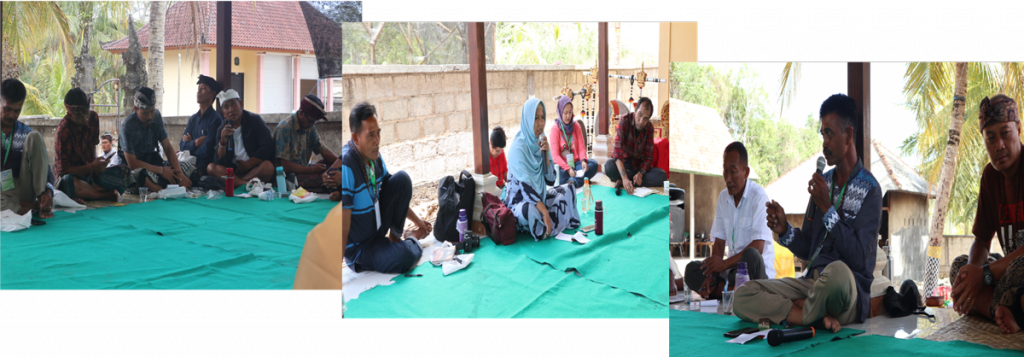
Photo 49: Representatives from Nusa Lembongan (Suarbawa) tell about the culture of growing seaweed which was lost due to tourism. Currently, seaweed cultivation in Lembongan is starting to be encouraged again.
Photo 50: Representative from Wakatobi Yanti) is telling about the diversity of local food along with community knowledge related to reading natural signs and preserving the environment.
Photo 51: One of the Panggoba from Gorontalo (Danggu Nani) tells the role, function of the Panggoba, environmental management and agricultural systems in Gorontalo.
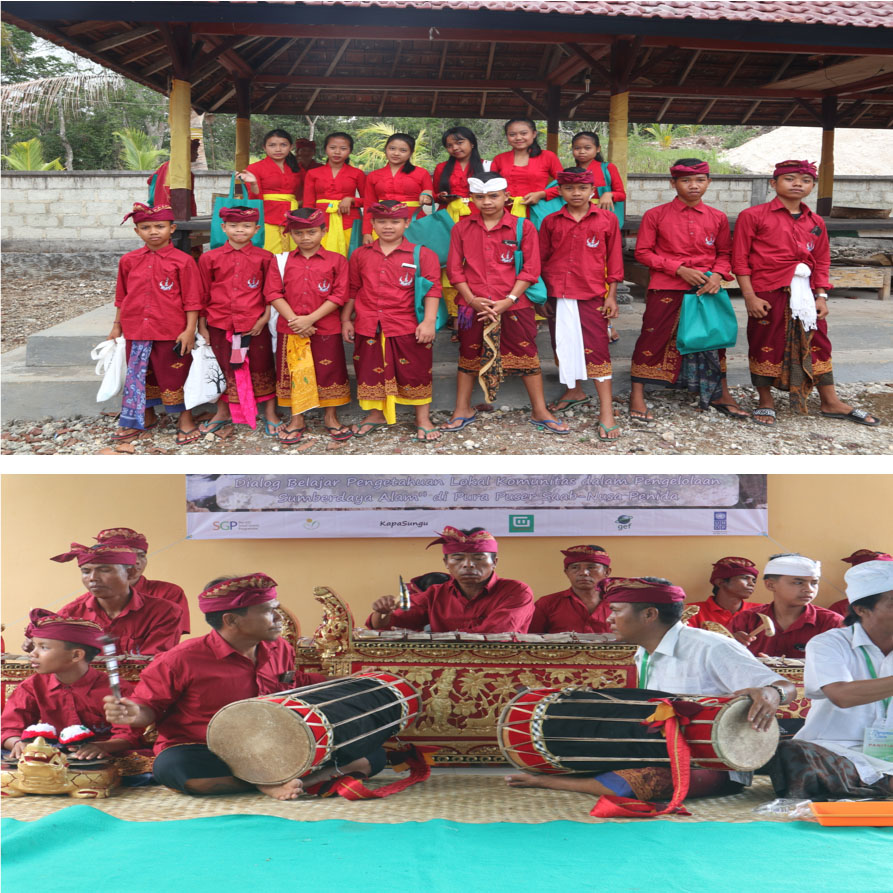
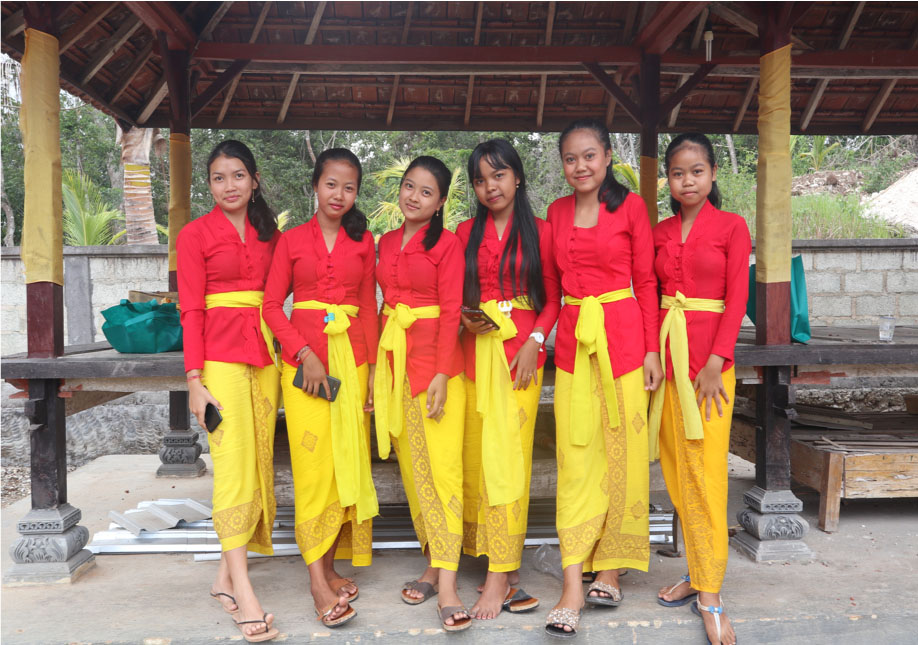
Photos 52, 53, 54: Paruman Nusa involves the Sekahaa Gong of Batumadeg village consisting of cross generations (old, young, children) to participate in enlivening the learning dialogue with the community.
PROJECT OUTCOMES
Field research conducted in four regions resulted in documentation of knowledge that was/was almost lost and then written in narrative form into a book manuscript.
NUSA PENIDA
- Loss of local knowledge regarding cotton cultivation, local food (bleng corn, tubers, gage rice) and processing and storage systems for agricultural products (jineng/lumbung).
- The erosion of seaweed cultivation and knowledge about reading nature due to massive tourism.
- The loss of cotton plants and natural dyes was followed by the loss of traditional knowledge in making woven cloth.
- The rain water storage system (cubang) is starting to be abandoned.
SEMAU
- The loss of the Hui belief system and utun bangat was followed by the loss of other agricultural traditions such as seeding techniques, rainwater begging ceremonies, harvest offerings and corn preservation which was celebrated with a feast.
- The loss of knowledge regarding herbal plants that are efficacious for healing is due to the loss of the role and function of the imblingin, imtehen (traditional healer).
- The loss of knowledge about weaving traditional cloth and weaving various types of leaves is due to the lack of knowledge transfer to the younger generation.
GORONTALO
- Loss of local food (especially local types of corn) due to mass programs from the government.
- The existence of Panggoba who is an expert in astrology, a place for agricultural consultations, the dayango ritual which is threatened with extinction because it is considered a sirik-musrik practice.
WAKATOBI
- Loss of local knowledge about reading natural signs for agricultural cultivation activities.
- Local food diversity is relatively safe, but you have to start thinking about anticipation when it will become 10 new Balis.
- From investigations in four regions (Nusa Penida, Semau, Wakatobi, and Gorontalo), the loss of local knowledge occurred when the region was opened for industrial and trade (market) interests, which were secured by the state (through its policies and apparatus) and used religion as a way of suppressing it.
- In practice, the industrial-based orientation of agricultural development actually poses a threat to the existence of local food sources, for example regarding the green revolution which encourages uniformity in types of food.
- Local knowledge that has become daily practice, has become a living belief system, in fact, has an influence on other systems. If local knowledge changes/loses, it will change many things (including production activities).
- Nusa Penida, with the massive onslaught of tourism, local food availability is starting to become 'fragile', but is still quite safe because of Hindu teachings which prioritize harmony with nature and the use of local materials in various ceremonies.
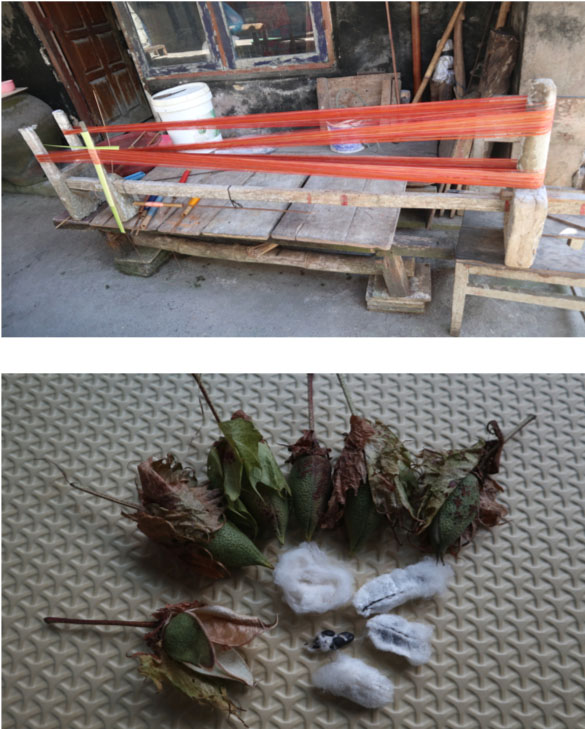
Photo 55: Traditional loom (Cag cag) which is rarely used. Currently, this loom can only be found in Tanglad village.
Photo 56: Nusa Penida's rare cotton plant.
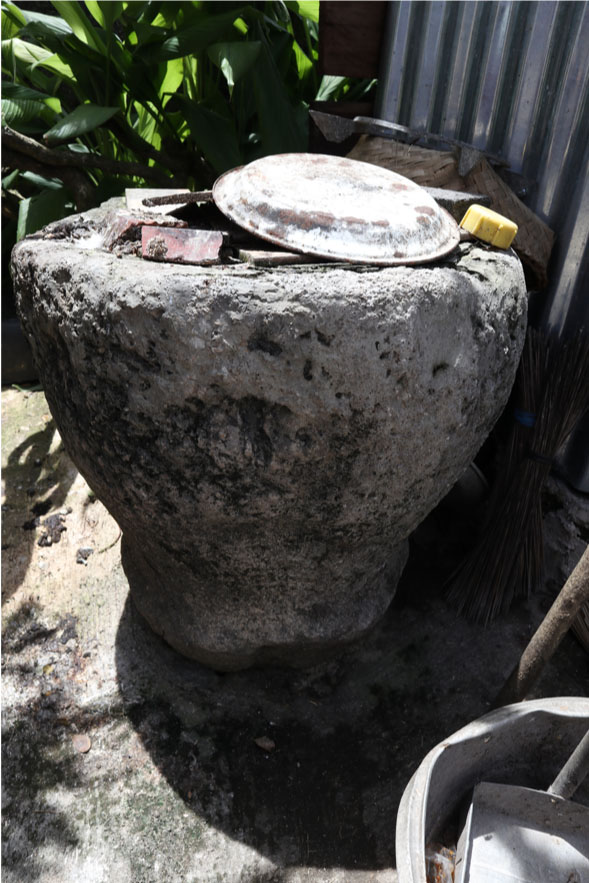
Photo 57: a form of mortar used to pound agricultural products in Nusa Penida.
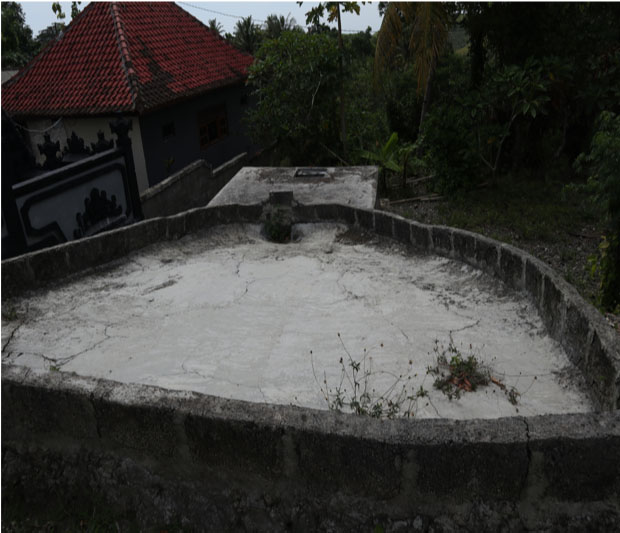
Photo 58: Cubang (rainwater collection in residents' fields which is used for irrigating fields and drinking livestock (cattle).
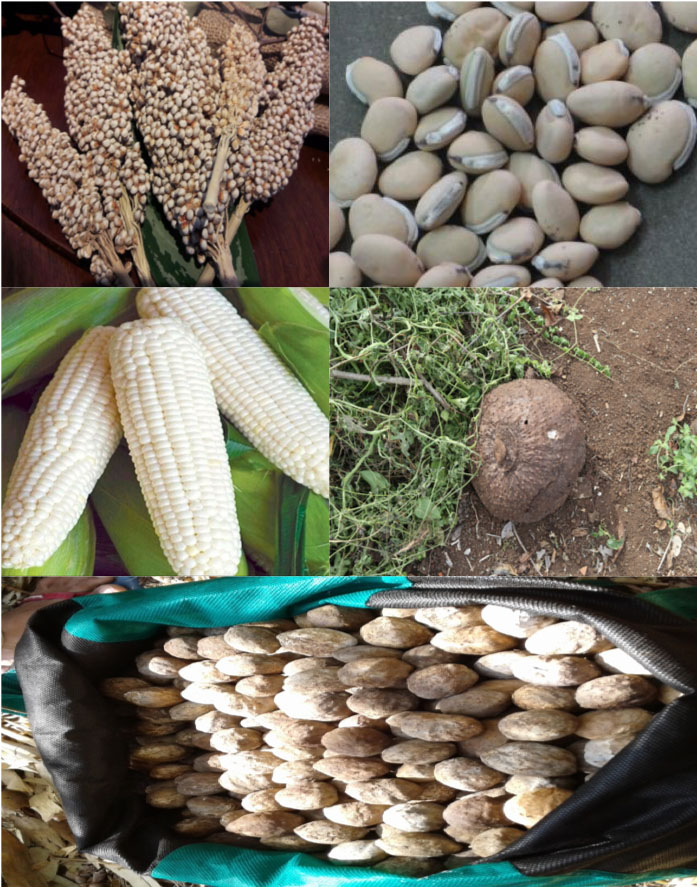
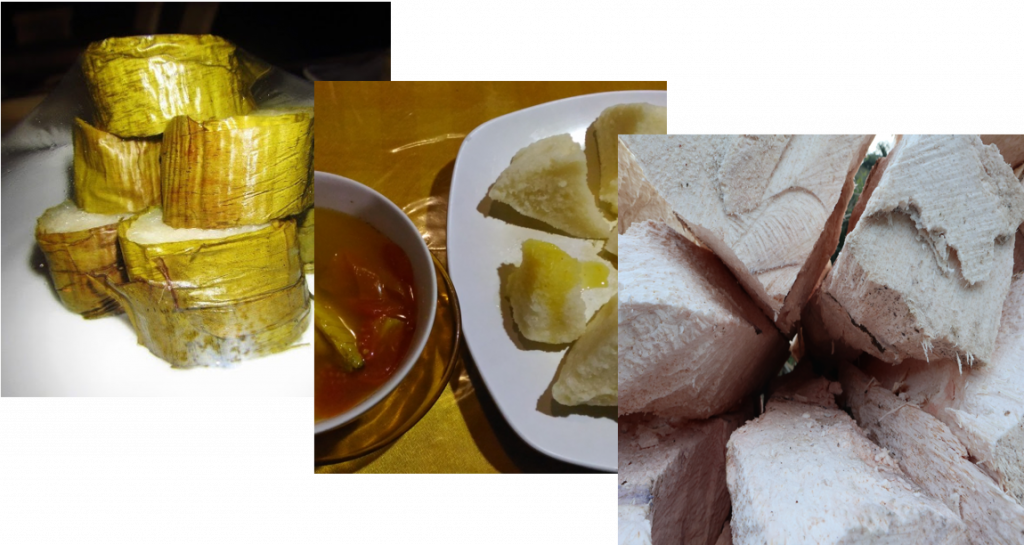
Photos 59, 60, 61, 62, 63: Several types of local food in Nusa Penida which are starting to become scarce.
Photos 64, 65: Processed cassava in Wakatobi.
Photo 66: Sago trees as local food in Gorontalo.
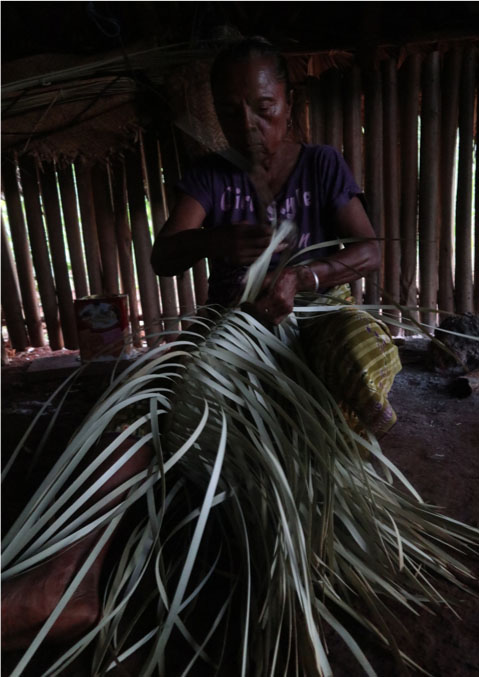
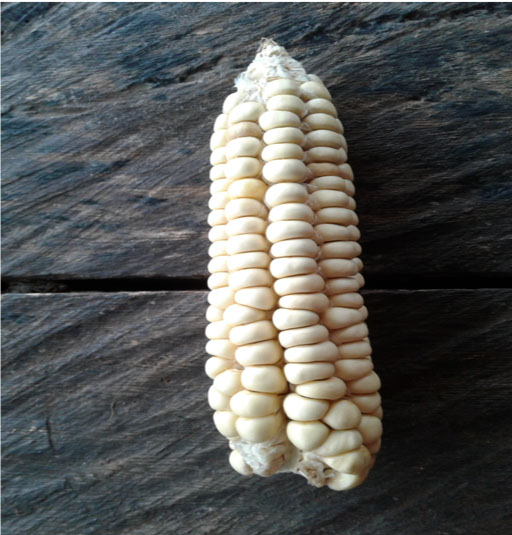
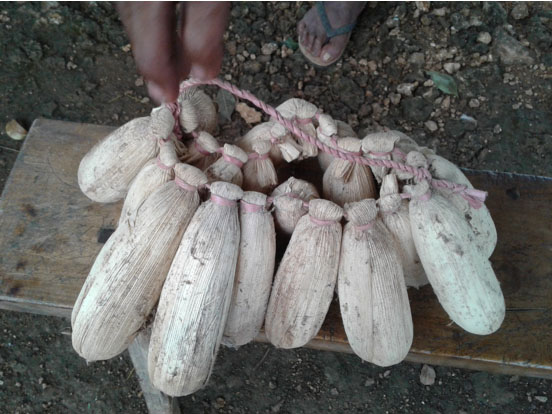
Photo 67: A mamatua is weaving palm leaves to make various household utensil products.
Photo 68: Local corn which is the staple food source for the Semau people. But now it is rarely cultivated.
Photo 69: Model of storing corn for use as seed. Corn is arranged in such a way and is usually stored on the kitchen ceiling.
IMPACT OF ACTIVITIES
- The community has become more aware of the importance of maintaining and re-exploring their local knowledge (results from Paruman Nusa).
- Awareness to build a network system for food seeds and biodiversity in each region.
- Awareness to revitalize findings in the field has become stronger. For example, awareness of making forests a conservation area (Semau), preparing a seasonal calendar in Gorontalo and strengthening the role and function of Panggoba.
- Awareness of local knowledge regarding local food is re-emerging and to maintain and replant local food as a source of food independence as well as a brand image for the local community.
BEST EXPERIENCE
- When I first entered the temple during an odalan (big ceremony) and was well received by the committee, stakeholders, the temple administrators strengthened themselves to be more enthusiastic about working for the diversity of indigenous communities and not feel like foreigners.
- When in direct contact with indigenous communities. Being involved in Jero Mangku family activities and sleeping in residents' houses, at temples, in traditional halls and then being involved in community activities both at home and with the wider community, was an unforgettable experience. Proving that humanity, love, sincerity, kindness, can penetrate barriers.
- When you cook local food and listen to stories from the elders, it's like stepping into the past and experiencing things you never thought possible.
- Witnessing simplicity, tenacity, struggle, and consistency are the main assets of the community to maintain local indigenousness while creating a better life.
- In Semau, every step you step on you always get a warm welcome. Eating, drinking, sleeping together in a local's house feels like returning to your own home.
SUSTAINABILITY ACTIVITIES
- Take a more detailed inventory of local food, folk stories/fairy tales, traditional games in each region to enrich local culinary literacy and enrich communal knowledge for independence on small islands.
- Reconstruction and duplication of relevant local knowledge in environmental conservation efforts.
- Publishing textbooks for children or providing reading materials based on local knowledge.
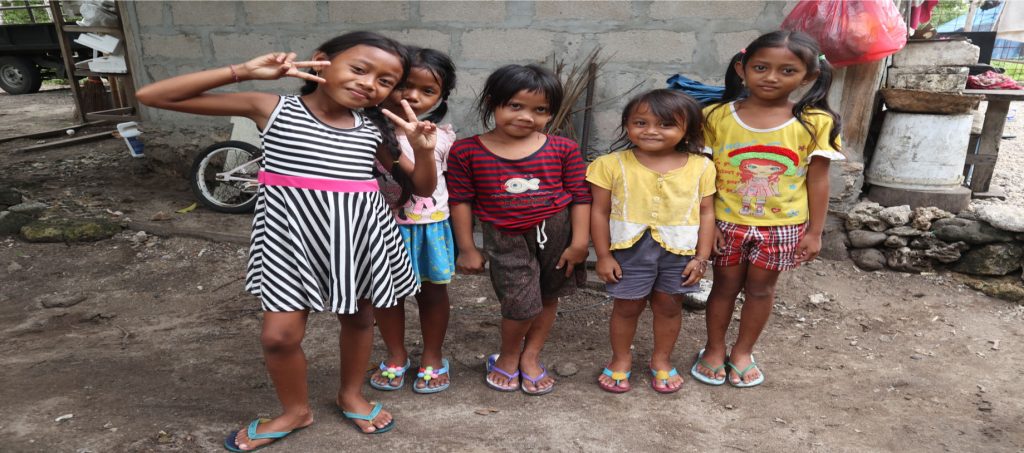
THANK YOU
